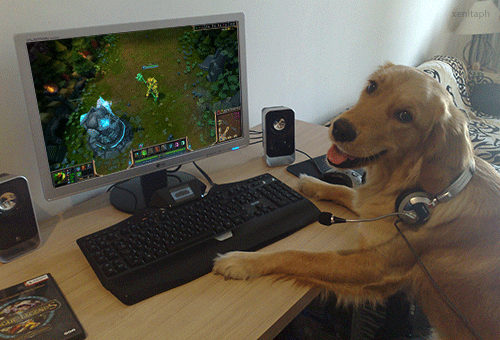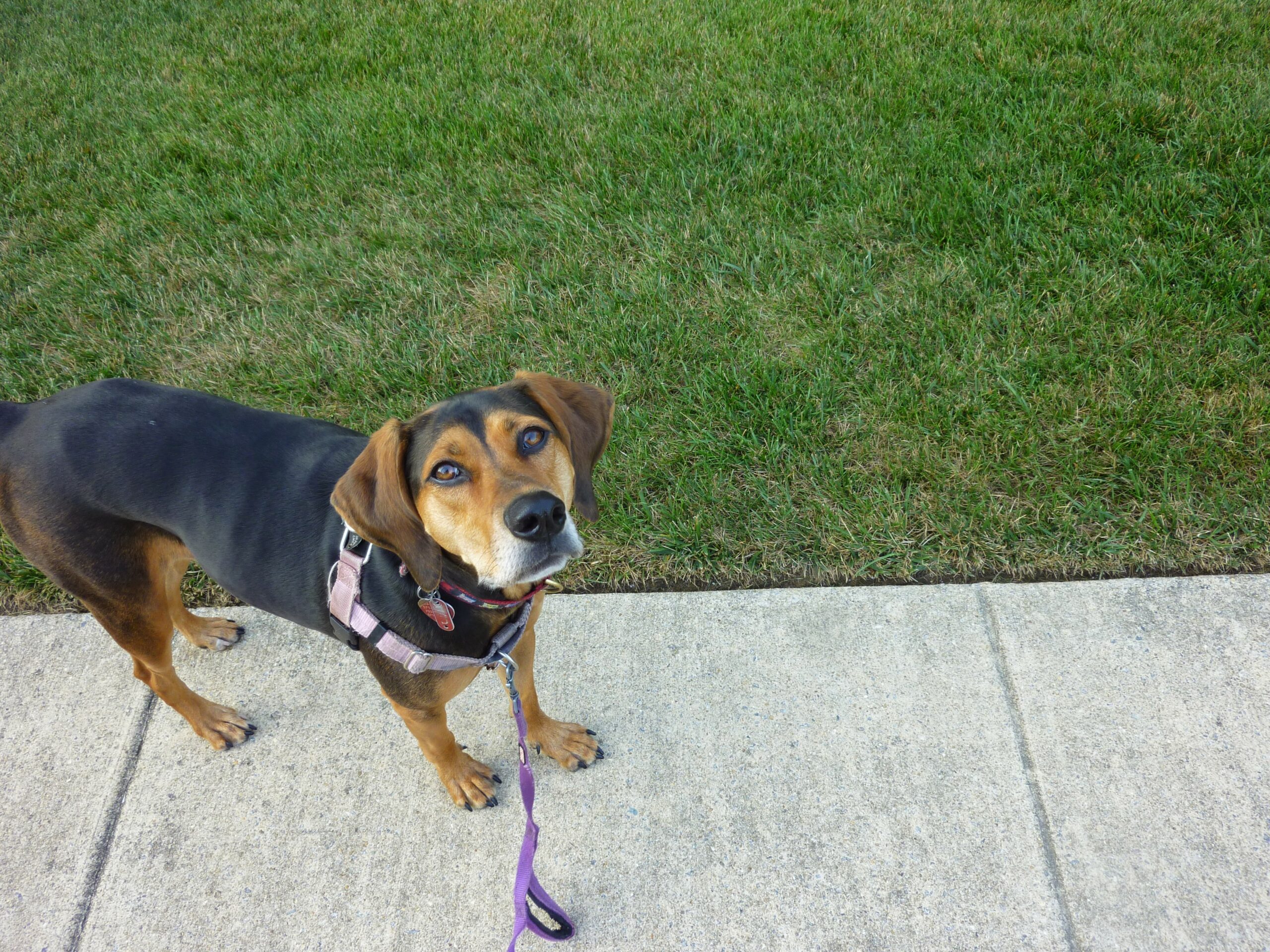Barks Blog
When is Dog Training Like a Video Game?
My kids and I have been playing a game called Botanicula on my iPad. It’s one of those intuitive, trial and error games with no instructions. In each scene of this weird world, you just tap and swipe till something happens. Then you have to deduce what actions made it happen, so you can repeat or avoid that outcome in the future. And it dawned on me: I bet dogs in training classes feel like I do playing Botanicula: It’s all a crap shoot, a guessing game, until they start to grasp the rules. When we first start teaching a new skill, they truly have no idea what we want. They’re guessing, using trial and error plus their memory of what’s worked in the past, to figure out what to do and how to earn a reward.

We teach our clients to train a “down” by luring, “nose to toes”. The dog eventually does lie down, but not really on purpose; he’s just getting into a better position to extract the treat from the hand. The next time, maybe he notices the treat came while he was lying down. Huh. Maybe he has enough presence of mind to think, I wonder if I got the treat BECAUSE I lay down? Or maybe it takes another five repetitions (or more!) for the dog to have that a-ha! moment: I lie down, I get a treat from that hand. Then you need him to recognize that you’re not just holding a treat in your hand, you’re giving him a signal with that hand. Ohhhhh… And the hand signal has a meaning, i.e. you want him to lie down, and it has the same meaning even after the lure has bee faded. That’s another cognitive leap that may take several more repetitions to crystalize in his mind.
Learning certain advanced behaviors isn’t even intuitive; in fact some are downright counterintuitive. Think about how we teach our dogs to “leave it”. The concept they have to learn is, “If I don’t try to get a treat, I get a treat.” Whaaaaat? Quite a paradox. How does that make sense to a dog, especially one who’s learned other behaviors, like “down”, by being lured with a treat, and then rewarded with that treat for trying relentlessly to get it? And remember, dogs are hard-wired to scavenge for food and gobble up whatever they find before another scavenger grabs it. So the idea of finding food and backing away from it on cue, instead of devouring it, just doesn’t compute at first.
And yet they do manage to learn “leave it”. Our method involves putting a treat under your foot and clicking the moment the dog stops nosing and mouthing it. Then we shape it into backing away from the “forbidden fruit” and looking at us instead. But oh boy, the mental gymnastics of that cognitive obstacle course! I imagine my dog’s experimental method like this: “I smell a treat. It’s under the shoe. I will extricate it by any means necessary. Hmm…why can’t I get it? Let me back up and think about this. Wait, she just clicked and gave me a treat–why?! Oh, now she’s put another treat under her shoe. I’ll just do what I did last time; that worked out pretty well. Wait, what did I do? I licked and licked and nibbled and nibbled and then I think I backed up…. OK that worked again! And again! And again! Now…I wonder if I really need to do so much licking and nibbling, or is it really the backing up part that worked? Lemme try less nibbling and get to the backing up quicker. Yes!! Ah–maybe it’s just the backing up part? Lemme just do that and see what happens. And…bingo!”
So for our dogs, every new training exercise is a new intuitive, trial and error game without explicit rules. No wonder it takes a while for them to catch on, and mistakes and misunderstandings are inevitable. To help them figure out what we want, we need to be as clear and consistent as possible with our cues. In my classes students use clickers, their dogs are on leash, their leash often has a poop bag dispenser or other accessory dangling off it, and many haven’t yet discovered the virtues of a bait bag so they’re also clenching little baggies of treats in their mitts. Handlers quite literally have their hands full. So I suggest they hold the leash and clicker in the same hand (and get a bait bag for goodness’ sake!), and do their cueing with the other hand, which should be empty. Otherwise it’s very hard for a dog to filter out the background “noise” so they can read and process the cue. The dog is trying his level best to decipher the charades of his handler, but he’s also ducking the leash, getting bonked with the poop bags, and fixating on the Ziploc of hot dogs looming before him. And with her fingers wrapped around her clicker, the handler is giving fist gestures instead of hand signals. It’s a wonder our dogs learn anything at all when our cues are so haphazard!

When my kids and I play Botanicula, if we make too many mistakes or struggle too long without progress, we get bored and quit. It starts to seem like no matter what we do, we fail. It stops being fun. In the same vein, we don’t want our dogs to keep messing up, have dry spells with no rewards, get frustrated, and give up. If our dogs can’t figure out the rules from the information we’re giving them, we need to change what we’re doing and make it easier for them to “win”. After all, training is supposed to be fun, and let’s face it, games stop being fun when you keep losing. And I want my dog as addicted to training as my kids are to their *#@% video games!
What are your favorite ways to help clients communicate clearly with their dogs?

